Check Quality

Function
Check Quality provides information of mesh quality.
Call
Mesh > Check Quality
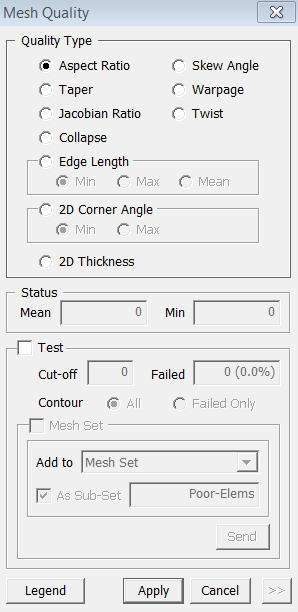
<Check Quality>
Quality Type
Aspect Ratio
The aspect ratio of 2D element is defined as the ratio of its shortest edge length to its longest edge length. A square has the aspect ratio of 1 since its sides have the same length. As it gets away from the square shape, the aspect ratio becomes smaller than 1.
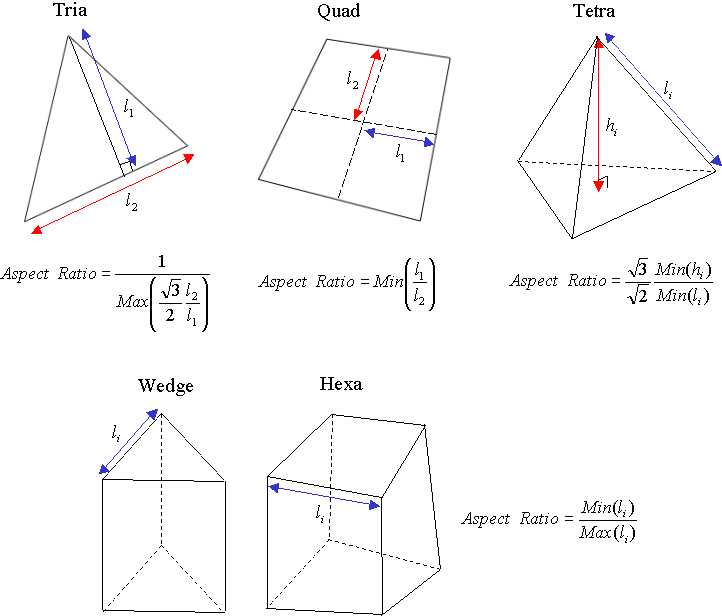
Skew Angle
An angle is formed by the two lines which pass through the midpoints of the sides of the quadrilateral. The skew angle represents the absolute value of the difference between the angle and 90 degree. A rectangle has the skew angle of 0 since the formed angle between lines is 90 degree. For the triangle and quadrilateral elements, the skew angle is found as shown in the figure. For solid element (Tetra, Hexa, Wedge), it calculates the skew angle for each element faces and assigns with the minimum value.
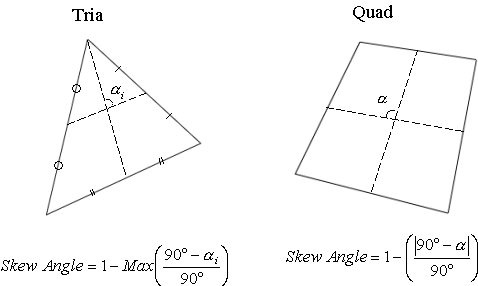
Taper
It checks for the amount of deviation of the quadrilateral element from a rectangular shape. A rectangular element has the taper of 1, and it gets away from the rectangular shape (closer to the triangular shape), the taper becomes smaller. For the quadrilateral elements, the skew angle is found as shown in the figure. For solid element (Hexa, Wedge), it calculates the skew angle for each element faces and assigns with the minimum value.
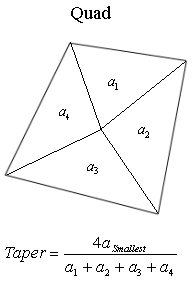
Warpage
The warpage of the quadrilateral elements is defined as the deviation from a best-fit plane that contains the element. It is not always a case to define a plane with 4 nodes. Therefore, a node of the quadrilateral element may be formed outside of a plane. The warpage is a measurement how this node has been deviated, and as it gets closer to 0, the element become more planar. For the quadrilateral elements, the warpage is found as shown in the figure. For solid element (Hexa, Wedge), it calculates the warpage for each element faces and assigns with the maximum value.
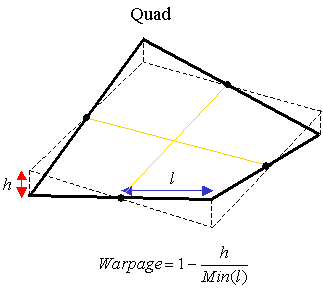
Jacobian Ratio
The Jacobian calculation is done at the integration points of elements commonly known as Gauss Point. At each intergration point, Jacobian Determinant is calculated, and the Jacobian ratio is found by the ratio of the maximum and minimum determinant value. The Jacobian Determinant of 2D elements is calculated after it has been projected on to a plane, and the determinant of 3D elements is found by direct calculation.
If the quadrilateral element is not convex, the negative Jacobian ratio will be obtained, and elements with the negative Jacobian Ratio can not be solved with correct result.
Twist
Twist represents the factor which measures how much two facing element faces are twisted.
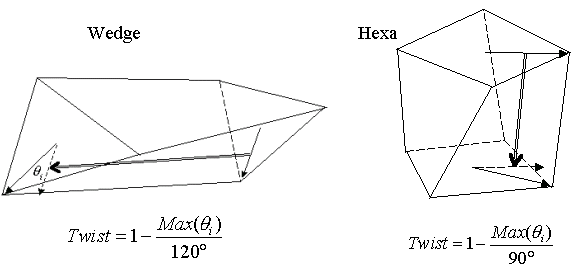
Collapse
When auto-generating a mesh in a complex or invalid geometry. A tetra element, which seems as thin as a planar element, will be often generated. This type of the element is called as a collapsed tetra, and this option enable to check for such a collapsed element.
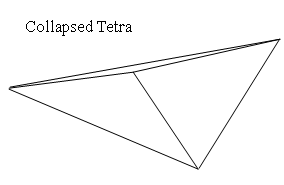
Edge Length
Check for the length of element edges.
2D Corner Angle
Check
for the corner angle of 2D elements.
2D Thickness
Check for the thickness of plate elements.
Status
Mean
Enter the mean value of the selected mesh quality check.
Min
Enter the minimum value of the selected mesh quality check.
Test
Cut-off
Define
the Cut-off value by which program will find the elements which have a
lower quality value.
Failed
Displays
the number of elements which has a lower quality value than the Cut-off.
Contour
All
Displays
all elements.
Failed only
Displays
only the elements which has a lower quality value than the Cut-off.